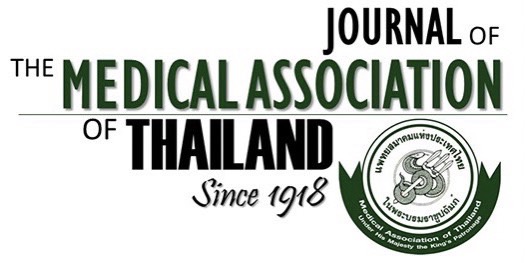Post-COVID-19 Conditions Among Health Workers: Prevalence and Occupational Impacts in a Thai University Hospital
Rangsiman Chuntirapong¹, Naesinee Chaiear¹, Piroon Mootsikapun²
Affiliation : ¹ Department of Community, Family and Occupational Medicine, Faculty of Medicine, Khon Kaen University, Khon Kaen, Thailand; ² Division of Infectious Diseases and Tropical Medicine, Department of Internal Medicine, Faculty of Medicine, Khon Kaen University, Khon Kaen, Thailand
Objective: To determine 1) the prevalence of health workers (HWs) experiencing the World Health Organization (WHO) defined post-COVID-19 conditions (PCCs), 2) their impact on work, and 3) factors associated with PCCs in a tertiary hospital in Khon Kaen, Thailand.
Materials and Methods: The present study was a retrospective descriptive study that involved 3,285 HWs with confirmed SARS-CoV-2 infection. A simple random sample of 384 participants was selected. Data was collected using validated self-administered questionnaires, which had content validity index (CVI) scores ranging from 0.7 to 1.0, which evaluated PCCs consistent with WHO criteria, which is of two months duration or longer, as well as demographic data, professional roles, work schedules, and impact on work including absenteeism, shift modifications, and income reduction. Data were analyzed using descriptive and inferential statistics.
Results: From 346 respondents, providing a 90.0% response rate, with 84.1% female, and a mean age of 37.1±10.4 years, the prevalence of HWs experiencing PCCs was 30.9% (95% CI 26.3 to 36.0). Common symptoms included fatigue in 46.7%, chronic cough in 23.4%, and sleep disturbances in 21.5%. Among those with PCCs, 57.0% reported impacts on their work, including shift modifications for 30.8%, increased absenteeism for 16.8%, and a marked reduction in work efficiency of more than half for 5.6%. Furthermore, 72.9% reported continuing to work despite symptoms. Inferential analysis showed a statistically significant association between rotating shift work and PCCs among nurses (cOR 3.32, 95% CI 1.02 to 14.63), however, this association was not significant after adjusting for covariates (aOR 2.35, 95% CI 0.63 to 8.73).
Conclusion: The prevalence of HWs experiencing PCCs was 30.9% (95% CI 26.3 to 36.0), and more than half of the affected HWs experienced impacts on their work. No factors were found to be significantly associated with PCCs development in this study. These findings suggest that return-to-work medical assessments for HWs recovering from respiratory infections should consider appropriate job modifications when residual symptoms persist.
Received 18 February 2025 | Revised 10 April 2025 | Accepted 28 April 2025
DOI: 10.35755/jmedassocthai.2025.5.400-409-02784
Keywords : Post COVID-19 condition; Health worker; Impact on work
All Articles
Download



